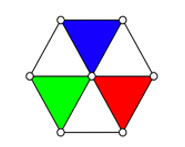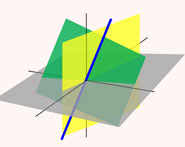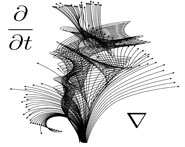


 تاريخ الرياضيات
تاريخ الرياضيات
 الرياضيات في الحضارات المختلفة
الرياضيات في الحضارات المختلفة 
 الرياضيات المتقطعة
الرياضيات المتقطعة
 الجبر
الجبر
 الهندسة
الهندسة 
 المعادلات التفاضلية و التكاملية
المعادلات التفاضلية و التكاملية 
 التحليل
التحليل
 علماء الرياضيات
علماء الرياضيات |
Read More
Date: 19-12-2020
Date: 4-3-2020
Date: 2-1-2020
|
The so-called rule of three is an educational tool utilized historically to verbalize the process of solving basic linear equations with four terms where three of the terms are known. Evidence suggests that there are two "different" rules of three: One direct and one inverse.
The direct rule of three describes the process for finding the fourth term  of a proportion
of a proportion
 |
(1) |
given that  ,
,  , and
, and  are known. In words, the solution is to "multiply the second and third numbers together, and divide product by the first" so that the term
are known. In words, the solution is to "multiply the second and third numbers together, and divide product by the first" so that the term  in equation (1) above becomes
in equation (1) above becomes
 |
(2) |
The inverse rule of three describes the process of solving for  when
when  and
and  ,
,  , and
, and  are known. In words, one solves the problem by "multiplying the first and second terms together, and dividing the product by the third" so that
are known. In words, one solves the problem by "multiplying the first and second terms together, and dividing the product by the third" so that
 |
(3) |
REFERENCES:
Hersee, J. "Multiplication is Vexation." Paradigm 24, 1997. http://faculty.education.illinois.edu/westbury/paradigm/Hersee.html.



|
|
|
|
"إنقاص الوزن".. مشروب تقليدي قد يتفوق على حقن "أوزيمبيك"
|
|
|
|
|
|
|
الصين تحقق اختراقا بطائرة مسيرة مزودة بالذكاء الاصطناعي
|
|
|
|
|
|
|
قسم شؤون المعارف ووفد من جامعة البصرة يبحثان سبل تعزيز التعاون المشترك
|
|
|